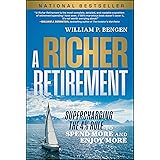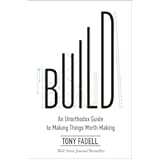Mastering Your Finances: How to Manage Your Money Like the 1%
We’ve all been there: peering over our bank statements, wondering where all the money went. It feels like a constant battle. Yet, some people seem to effortlessly grow their wealth. In the accompanying video, financial expert Nischa reveals a powerful truth: true financial success isn’t about how much you earn. It’s about how effectively you manage your money. This principle, common among the top 1% of high-net-worth clients, is accessible to everyone. You, too, can learn to manage your money like the 1%.
This article builds upon the insightful strategies shared in the video. We will delve deeper into the revolutionary 15-65-20 system. This simple, proven approach can transform your financial habits. It empowers you to build lasting security and enjoy your life. Let’s explore how this system works in detail.
The Foundation of Wealth: Your 15% for Savings and Investments
The first critical step involves setting aside 15% of every dollar you earn. This portion is your personal reserve. It is dedicated solely to building your future. This is where true long-term security begins. Prioritizing this 15% offers two immense benefits. These benefits lead to genuine financial peace.
Building Your Financial Safety Net: The Emergency Fund
Think about unexpected life events. A sudden car repair, a medical emergency, or an urgent family crisis can strike at any moment. Without an emergency fund, these surprises can cause significant financial distress. They often lead to accumulating debt. This is precisely why a solid cash cushion is essential. It prevents financial derailment.
Your first goal is to build a quick-access “solution fund.” Aim for one month of essential expenses. This fund covers only your core costs. It excludes discretionary spending like streaming services. Focus on rent, mortgage, groceries, utilities, and transportation. This initial step creates your first line of defense. It guards against life’s small surprises.
Furthermore, expand this fund to cover three to six months of core expenses. This larger reserve offers ultimate peace of mind. Losing a job or facing a health scare becomes manageable. You can then focus on the emergency itself. Stressing over bills becomes a thing of the past. This proactive defense is vital.
Making Your Money Work: The Magic of Compound Interest
Beyond emergency savings, your 15% ignites wealth creation. You do not need to be a financial guru. Even beginners can harness this power. The secret lies in compound interest. Albert Einstein famously called it the “eighth wonder of the world.”
Consider the powerful example of Janet and Mike. Janet invested $10,000 at age 30. With a steady 6% annual return, this grew to $32,071 by age 50. She added no extra money. Mike, however, waited until age 40. He invested $2,000 annually for 10 years, totaling $20,000. Earning the same 6%, his investment reached $27,944 by age 50. Janet’s initial, smaller investment grew more. This clearly demonstrates the immense power of time. Her money compounded for an extra decade. This created a significant “snowball effect.”
Compound interest means your earnings also earn returns. The longer your money remains invested, the more dramatically it multiplies. This creates a powerful wealth-building cycle. Starting early is key. It allows time to become your greatest ally. Therefore, consistent early investment is crucial for long-term growth.
Smart Investing for Beginners: Maximize Your 15%
Getting started with investing can feel intimidating. However, it is simpler than you think. You likely have accessible options. Many individuals are already investing. Perhaps they do so without realizing it.
Firstly, utilize your workplace retirement plan. If your employer offers a match, contribute enough to receive it. This is essentially free money. For example, a 5% match on a $50,000 salary means your employer adds $2,500. This boosts your savings significantly. These contributions often enjoy pre-tax benefits. Your money grows tax-free until withdrawal.
Secondly, explore tax-advantaged accounts. In the UK, this is the Stocks and Shares ISA. In the US, it is a Roth IRA. These accounts offer incredible tax benefits. Your investments grow completely tax-free. You pay no taxes on dividends or capital gains. Governments provide these incentives. They encourage long-term saving and investing. Remember, Roth IRA contributions use after-tax money. This means tax-free withdrawals later. Prioritize maxing out these accounts. Only then consider regular taxable investment accounts.
Finally, keep your investment strategy simple. Passive funds are an excellent choice. These funds track the overall stock market. They automatically diversify your money. This spreads risk across hundreds of companies. They also feature very low fees. More of your money stays invested. You do not need to constantly tinker. Set it and forget it. This “lazy person’s path to wealth” is a proven strategy. Even top investors use it. Index funds or ETFs are common examples of passive funds. They offer broad market exposure. They minimize the need for active management.
Controlling Your Core: Optimizing 65% of Your Income
After securing your future with 15%, focus on your present. The 65% portion of your income covers fundamental expenses. These are the basic necessities. They keep your life running smoothly. This includes rent or mortgage, groceries, utilities, and transportation. These are your essential must-haves.
This category can be challenging. Fundamental expenses often expand to match your income. A pay raise might lead to a bigger apartment. A car upgrade brings higher costs. What feels like progress can actually strain your budget. Your expenses will grow unless actively managed. Therefore, setting a firm 65% limit is crucial. It keeps your core costs in check. You avoid scrambling just to cover basics.
Managing this percentage effectively requires diligence. According to the Office for National Statistics, housing is a major expense. It represents about 19% of total weekly expenditure. This includes rent, mortgage interest, and utility bills. Transportation is the second-largest category. It makes up approximately 14% of household spending. This covers vehicle purchases, maintenance, fuel, and public transport. These figures highlight where most money goes.
Examine your own spending habits. Identify your biggest spending categories. Knowing where your money flows is empowering. You can then look for optimization opportunities. Can you negotiate a lower rent? Is a more affordable commute option available? The goal is not to eliminate joy. It is to control unavoidable costs. This gives your budget much needed breathing room. It frees up funds for enjoyable activities.
Guilt-Free Spending: The 20% for Enjoyment and Self-Investment
Now, let’s talk about the best part: the final 20%. This is where the fun truly begins. In his book “Die With Zero,” Bill Perkins shares a profound idea. The ultimate goal is not to die with a huge bank account. It is to live a rich, fulfilling life. The 1% understands this secret. They intentionally allocate funds for guilt-free enjoyment. So should you.
Constant work without play leads to burnout. Studies consistently show this. People who allow budget flexibility are more likely to stick to financial goals. Think of it like a strict diet. Without occasional “cheat meals,” you risk breaking and bingeing. The same principle applies to your finances. This planned spending prevents financial fatigue.
You might worry this derails savings. In fact, the opposite is true. Without designated “fun money,” you risk overspending later. You might even abandon your financial plans entirely. The 15-65-20 rule wisely allocates 20% for enjoyment. Reframe this as an investment in yourself. Staying motivated, balanced, and energized is key. This increases the likelihood of long-term financial success.
Practically, this 20% can fund various experiences. Treat yourself to a special dinner once a month. Purchase that item you have been eyeing. Plan a fun getaway with friends. The essence is permission. Enjoy 20% of your income without guilt or shame. It supports your well-being. This ultimately strengthens your ability to manage your money like the 1% for years to come.






